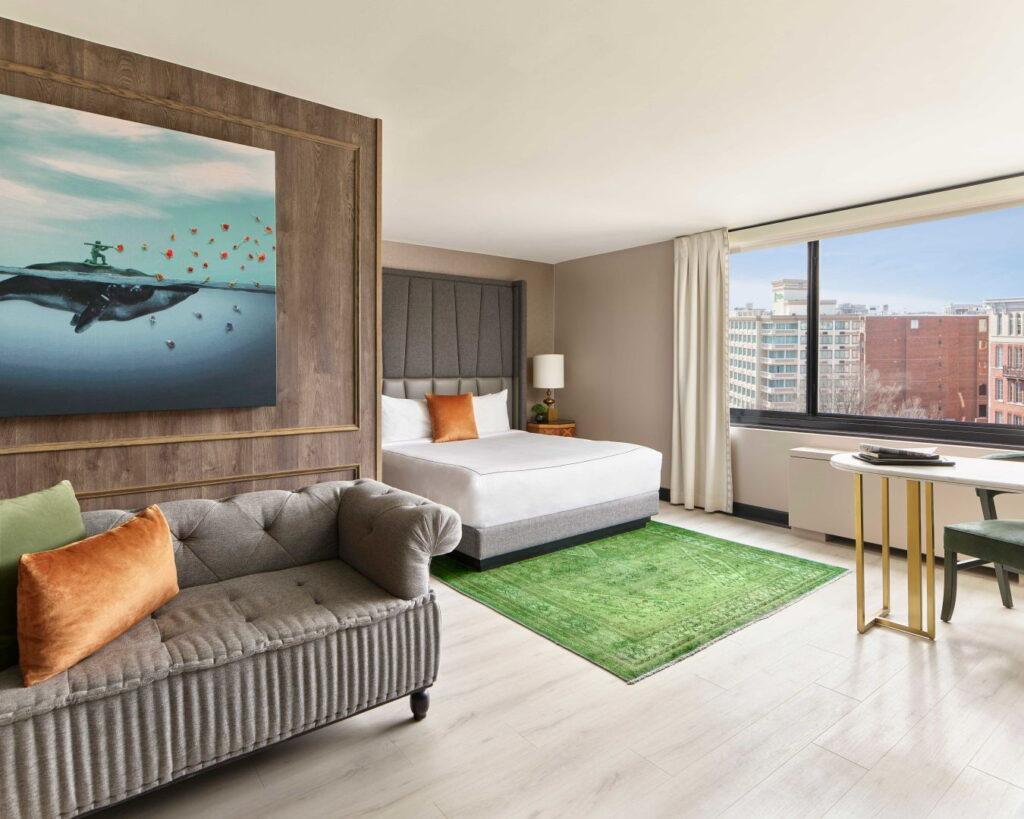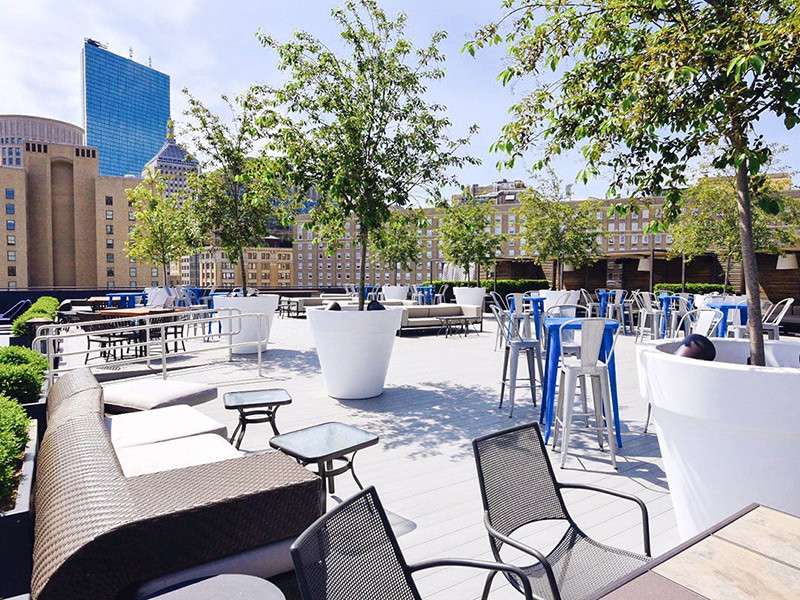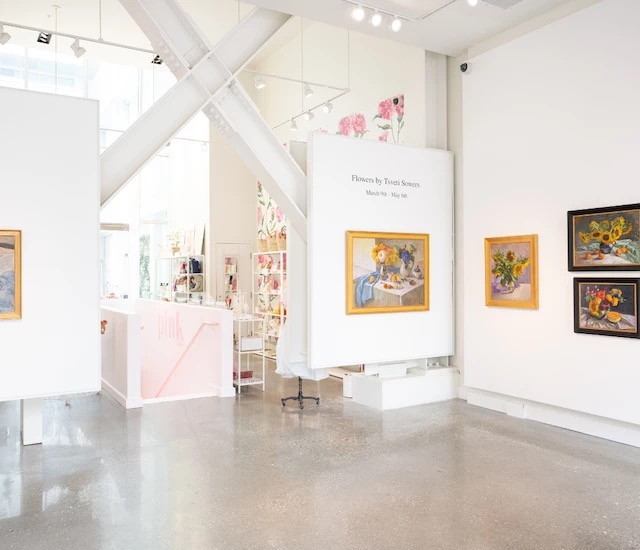Embark on an unforgettable journey through America’s historical heartlands, exploring iconic destinations that reveal the nation’s complex and vibrant story. From the monumental grandeur and powerful symbolism of Washington D.C., to the revolutionary spirit that echoes through the streets of Boston, and onward to Richmond, Virginia, where history intertwines seamlessly with a thriving art and cultural scene—each city offers a unique window into America’s past and present. Whether walking along Boston’s Freedom Trail, reflecting at D.C.’s memorials, or exploring Richmond’s dynamic neighborhoods, travelers will discover the people, places, and moments that have profoundly shaped the United States.
Washington D.C.: Monuments to a Nation’s Story:
As the capital of the United States, Washington D.C. stands as a testament to the nation’s history and its ongoing narrative. The city’s very layout and architecture speak volumes about its foundational ideals and the figures who have shaped its destiny. The sheer number of historical landmarks, from iconic monuments to significant buildings, underscores D.C.’s deep connection to American governance and heritage. For visitors interested in understanding the trajectory of the United States, a journey through its capital is an essential experience.
The National Mall serves as the central artery of D.C.’s historical landscape, an expansive green space flanked by some of the nation’s most recognizable and symbolic structures. A walk along the Mall offers a powerful opportunity for reflection at memorials dedicated to pivotal figures and events. The towering Washington Monument, an obelisk honoring the nation’s first president, stands as a centerpiece, while the Lincoln Memorial at the western end provides a majestic tribute to the president who led the nation through its greatest trial. The Jefferson Memorial, an elegant circular structure, commemorates the author of the Declaration of Independence, and the World War II Memorial recognizes the sacrifices made to restore peace and freedom globally. Further along, the Martin Luther King, Jr. Memorial stands as an inspiration, echoing his dream of equality, and the Vietnam Veterans Memorial offers a poignant space for remembrance. The accessibility and central location of these landmarks allow travelers to easily engage with these powerful symbols of American history and ideals.
Beyond the Mall, the Smithsonian Institution presents an unparalleled opportunity to delve into the multifaceted history and culture of the United States and the world. This vast network of museums offers something for every area of interest. The National Museum of American History houses a comprehensive collection documenting the nation’s past and its cultural evolution. The National Museum of African American History and Culture provides crucial insights into the African American experience, while the National Museum of Natural History showcases the wonders of the natural world and human origins. For those interested in innovation and exploration, the National Air and Space Museum offers a fascinating look at aviation and spaceflight history. The National Museum of the American Indian explores the history and art of Native American cultures, and art enthusiasts can appreciate American art at the Smithsonian American Art Museum and portraiture at the National Portrait Gallery. A significant benefit for travelers is that admission to most Smithsonian museums in D.C. is free, making these invaluable resources accessible to all. The sheer breadth and depth of the Smithsonian’s holdings provide an unmatched opportunity to explore specific aspects of history and culture.
For a change of pace, a visit to Georgetown offers a glimpse into a historic neighborhood with its own distinct charm and modern vibrancy. Predating the establishment of Washington D.C., Georgetown began as a tobacco port town and was later designated a National Historic Landmark. Its architectural landscape is characterized by federalist-style buildings, historic brick row houses, and charming cobblestone streets. Exploring landmarks like Dumbarton House, Tudor Place, and the Old Stone House provides a more intimate connection to the city’s past. The presence of Georgetown University, the oldest Catholic and Jesuit institution in the United States, adds a youthful and intellectual dimension to the neighborhood. This area provides a contrast to the grand scale of the National Mall, offering a more personal encounter with history through its well-preserved architecture and neighborhood atmosphere.
Where To Stay
For a stylish and conveniently located stay in D.C., the Viceroy Washington DC stands out as an excellent choice. Situated in the Logan Circle neighborhood, known for its artistic spirit, the hotel offers proximity to key attractions such as the White House and the National Mall. This location provides a blend of easy access to major tourist sites and an immersion into a more local, creatively driven area. The Viceroy boasts a sophisticated and residential design, reflecting the character of its surroundings. A notable feature is its art gallery, The Salon, which showcases the work of local artists through rotating exhibits, embodying the hotel’s “Canvas For Discovery” initiative. A striking mural by No Kings Collective, inspired by the Logan Circle neighborhood, further enhances the hotel’s connection to the local art scene.

Guests can also enjoy amenities such as the seasonal rooftop pool and bar, Hush Rooftop Bar, which provides a vibrant scene with city views and inventive cocktails, perfect for unwinding poolside during warmer months. For on-site dining, Dovetail is a contemporary bar and restaurant offering a relaxed and spirited atmosphere, ideal for enjoying small plates and drinks, with the added option of outdoor patio seating. Additionally, BPM Coffee & Wine serves as the hotel’s coffee bar, a beloved local café where guests can join the community for their morning cup, as well as enjoy gourmet coffee, tea, and artisanal bites throughout the day, with breakfast and lunch options available.
Comfortable rooms with plush bedding, Wi-Fi, and workspaces ensure a relaxing stay. The art gallery, functioning also as a salon, offers a unique space for relaxation and cultural engagement. The Viceroy’s commitment to local art and its location in an artistic neighborhood create an experience that extends beyond typical tourist accommodations.
Boston: Following the Footsteps of Revolution:
Moving north, Boston emerges as a city deeply intertwined with the birth of the United States. Its historical significance is profoundly rooted in the events that led to and unfolded during the American Revolution, making it an essential destination for anyone seeking to understand the nation’s origins. The very streets of Boston echo with the footsteps of revolutionaries and the spirit of independence.
The Freedom Trail offers a remarkable way to experience Boston’s pivotal role in American history. This 2.5-mile path connects sixteen significant historical sites, each telling a part of the story of the American Revolution and its aftermath. Following the distinctive red brick line embedded in the sidewalks, visitors can explore iconic landmarks such as Boston Common, the Massachusetts State House, Park Street Church, Granary Burying Ground, and King’s Chapel. The trail continues to the Old South Meeting House, the Old State House, Faneuil Hall, the Paul Revere House, and the Old North Church, culminating at the USS Constitution and the Bunker Hill Monument. Walking this path provides a tangible connection to the past, allowing travelers to literally follow in the footsteps of those who shaped the nation. Guided and self-guided tours are available, offering different ways to engage with the rich history along the trail. The Freedom Trail’s design makes it easy for visitors to immerse themselves in this crucial period of American history.
A central point along the Freedom Trail, Faneuil Hall Marketplace stands as a testament to Boston’s historical importance as both a center of commerce and a forum for free speech. Often referred to as the “Cradle of Liberty,” it was here that many of the debates and discussions leading up to the American Revolution took place. Patriots like Samuel Adams and James Otis delivered stirring speeches advocating for American independence. Faneuil Hall witnessed protests against British taxation policies, including the Sugar Act and the Stamp Act. Even today, it continues to function as a marketplace and a site for significant civic events, including naturalization ceremonies. The adjacent Quincy Market adds to the vibrant atmosphere of the marketplace, offering a wide array of shops and eateries in historic 19th-century buildings.
For a broader cultural experience in Boston, the Museum of Fine Arts offers an extensive collection spanning diverse art movements and historical periods. This major institution houses nearly 500,000 works of art, including significant holdings in American art from the 18th and 19th centuries, featuring artists like John Singleton Copley, Winslow Homer, and John Singer Sargent. The MFA also boasts an impressive collection of French Impressionist and Post-Impressionist works by masters such as Monet, Renoir, and van Gogh, as well as a renowned collection of ancient Egyptian artifacts. Iconic works like Copley’s “Paul Revere” and Stuart’s “George Washington” are among the highlights. The museum also hosts a variety of temporary exhibitions, ensuring a dynamic and engaging experience for visitors.
Where to Stay
For a stay that combines modern comfort with a sense of Boston’s historical resonance, the Revere Hotel Boston Common is an excellent recommendation. Its prime location places guests near Boston Common, the Theater District, and the picturesque Boston Public Garden. The hotel is also conveniently situated for exploring historical landmarks along the Freedom Trail, including Faneuil Hall Marketplace. The Revere Hotel’s design draws inspiration from Boston’s independent spirit, with a modern and sleek aesthetic that subtly incorporates themes related to the city’s history, particularly Paul Revere’s midnight ride.
Artwork and design elements throughout the hotel thoughtfully reference the iconic spirit of Boston’s revolutionary history, blending historical inspiration with contemporary style. Guests can enjoy a range of amenities, including the expansive rooftop lounge, Rooftop@Revere, Boston’s largest rooftop bar and lounge. With sweeping panoramic views of the city’s skyline, this stylish outdoor venue serves creative handcrafted cocktails, local beers, and a diverse menu of appetizers and entrées, making it an ideal spot for sunset drinks or evening social gatherings. The on-site restaurant, Rebel’s Guild, further celebrates Boston’s rebellious past through a modern tavern atmosphere, offering a menu inspired by classic New England comfort food reimagined with fresh, locally sourced ingredients. Favorites include hearty seafood dishes, artisanal burgers, and an extensive brunch menu, accompanied by innovative cocktails and regional craft brews.

Guests seeking relaxation or activity can also take advantage of the hotel’s modern, well-equipped fitness center. Comfortable rooms feature amenities like plush bedding and C.O. Bigelow bath products. A unique offering for culturally inclined travelers is the complimentary access to the Paul Revere House, with tickets available at the front desk, as well as seasonal bike rentals for exploring the city. The Revere Hotel provides a comfortable and stylish base for discovering Boston’s rich historical and cultural attractions.
Richmond, Virginia: Where Art and History Converge
Richmond, the capital of Virginia, stands as a city deeply intertwined with American history, particularly its significant role during the Civil War. Beyond its historical importance, Richmond boasts a thriving arts and culture scene, making it a compelling destination for travelers interested in both the past and present.
For those interested in the Civil War, Richmond offers numerous significant sites. It served as the capital of the Confederate States of America, and landmarks such as the American Civil War Museum provide in-depth insights into this pivotal period. The White House of the Confederacy offers a glimpse into the political heart of the South during the war. Battlefields surrounding Richmond, such as those at Richmond National Battlefield Park, tell the stories of the intense conflicts that took place in the region. Hollywood Cemetery, a historic resting place overlooking the James River, is the final burial site for Confederate President Jefferson Davis and numerous other significant figures from the Civil War era.
Beyond the Civil War, Richmond’s history stretches back to the early days of the nation. St. John’s Church is famous as the location where Patrick Henry delivered his stirring “Give me liberty or give me death” speech, a pivotal moment in the lead-up to the American Revolution. Agecroft Hall, a 15th-century Tudor home transported from England and rebuilt in Richmond, offers a unique architectural and historical experience. The Canal Walk, stretching along the James River and historic canals, presents four centuries of Richmond’s history through medallions, monuments, and exhibits.
Richmond also boasts a vibrant arts and culture scene. The Virginia Museum of Fine Arts (VMFA) is a renowned institution with an extensive collection spanning various periods and cultures, and admission is free. The Institute for Contemporary Art at Virginia Commonwealth University (ICA at VCU) offers a cutting-edge look at modern art. The Poe Museum celebrates the life and works of Edgar Allan Poe, who lived and worked in Richmond. The city’s First Fridays art walk showcases the thriving gallery scene in the Arts District. This blend of historical significance and contemporary culture makes Richmond a unique and engaging destination.
Where to Stay
The Quirk Hotel Richmond offers a unique blend of art and history. Located in the heart of Downtown Richmond’s arts district, the hotel is surrounded by galleries, boutiques, and restaurants. It is also conveniently located near historic attractions, including the American Civil War Museum. Housed in a former department store building from 1916, the Quirk Hotel features an Italian Renaissance design, lending it a sense of historical charm. The hotel has a strong connection to the Quirk Gallery, emphasizing art throughout its spaces with rotating exhibitions featuring local and regional artists. The design seamlessly fuses classic architectural elements with modern artistic touches.

Amenities include a rooftop bar, Q Rooftop, on-site dining at The Lobby Bar and The Quirk Cafe, and the art gallery itself. Guests can also enjoy unique offerings like curated bicycle excursions to explore Richmond’s vibrant art and mural scene. The Quirk Hotel provides an experience that caters to both an appreciation for historical architecture and an engagement with contemporary culture.
Washington D.C., Boston, and Charleston each offer a distinct and compelling lens through which to view the rich tapestry of American history and culture. From the monumental symbols of the nation’s capital to the revolutionary fervor that ignited in Boston and the enduring heritage and Southern charm of Charleston, these cities provide immersive experiences for travelers seeking a deeper understanding of the past. The recommended hotels – Viceroy Washington DC, Revere Hotel Boston Common, and Quirk Hotel Richmond – serve as ideal starting points for exploring these urban landscapes, each offering a unique connection to the local culture and history, ensuring a memorable and enriching journey. By venturing to these historical hearts, travelers can connect with the stories, people, and events that have shaped the United States into the nation it is today.

